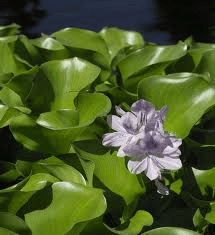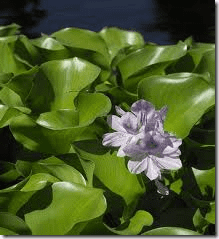The water hyacinth is an attractive yet extremely invasive floating water plant. It is present in lakes, rivers and ponds throughout the tropical and subtropical areas of the world. It is also found in other regions during the summer months, but dies out in the winter. This invasive plant degrades water quality and affects our waterways by choking out other plant life and limiting water activities by its presence.
Characteristics
-
The water hyacinth is native to South America and has naturalized itself to the lakes, rivers and ponds of the southern United States. It is a free-floating plant with dark green leaves and lavender blossoms. The water hyacinth ranges in size from several inches to more than 3 feet in height. The root system is thick, dark and fibrous. This plant is very invasive and can form a thick mat over the water.
Geography
-
This beautiful yet extremely invasive plant is said to have been brought to the United States in the year 1884 at an exposition in New Orleans. According to a survey (Schmitz et al. 1993), after 70 years the water hyacinth covered 126,000 acres of waterways in the southern regions of the United States. The water hyacinth is found mainly in tropical or subtropical regions throughout the world. The extreme cold temperatures of other regions is what limits its spread, although it has been found in New York, Kentucky, Tennessee and Missouri. It is in these areas that it escapes summertime cultivation but dies out during the winter months.
Ecological Impact
-
The water hyacinth can double its population within six days. This fast growth is what makes it such an invasive plant in waterways. Water management groups are on constant maintenance control when it comes to the water hyacinth. Their job is to continue to allow the rivers and lakes to be enjoyed by boaters, fishermen and other water-related enthusiasts. The large masses of water hyacinths can degrade water quality by blocking photosynthesis, thus reducing the oxygen levels in the water. A snowball effect is created by the low levels of oxygen resulting in the reduction of fish and underwater life as well as other plant species. They may also eliminate plants that many animals rely on for shelter and nesting purposes.
Maintenance Control
-
There are several methods that water management groups use for maintenance control. One is the use of mechanical harvesters and chopping machines. Mechanical harvesters remove the plants from the water and place them on shore. Then the plants are put into a chopping machine that grinds the plants up forming a slurry. This slurry is then sprayed across the water. Another method of control is by the use of insects. There are two types of water hyacinth weevils, which are used in various regions. There are also fish that control underwater plants, but they have been found to be ineffective against the spread of the water hyacinth.
Economic Ramifications
-
The costs associated to control this invasive plant comes at a high price. In the state of Florida alone, the economic impact was extremely high. The state spent millions of dollars a year to get this invasive plant under control. Now that the state is in maintenance control mode, its costs have been lowered.


Deprecated: strpos(): Passing null to parameter #1 ($haystack) of type string is deprecated in /home/agriviek8Qv/agriviet.net/public_html/wp-includes/comment-template.php on line 2522